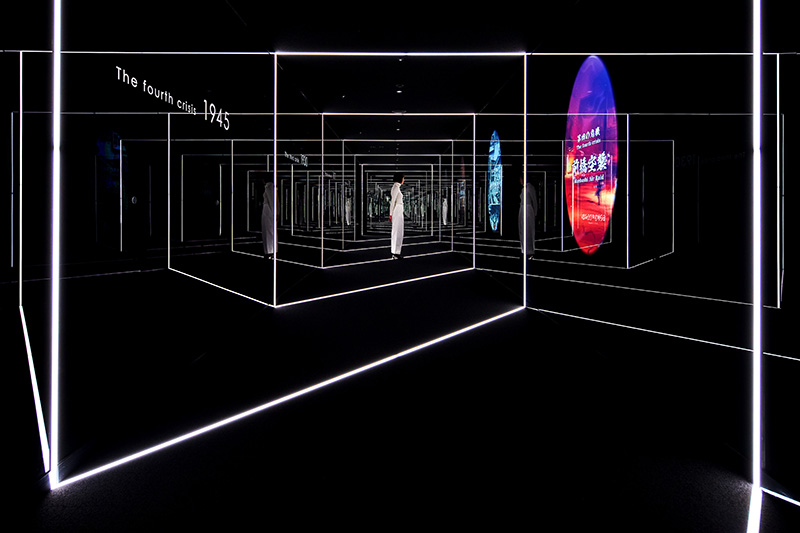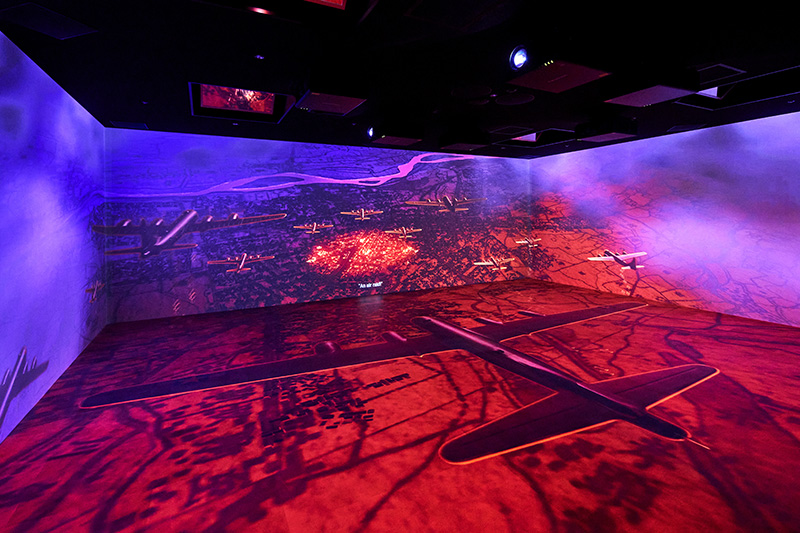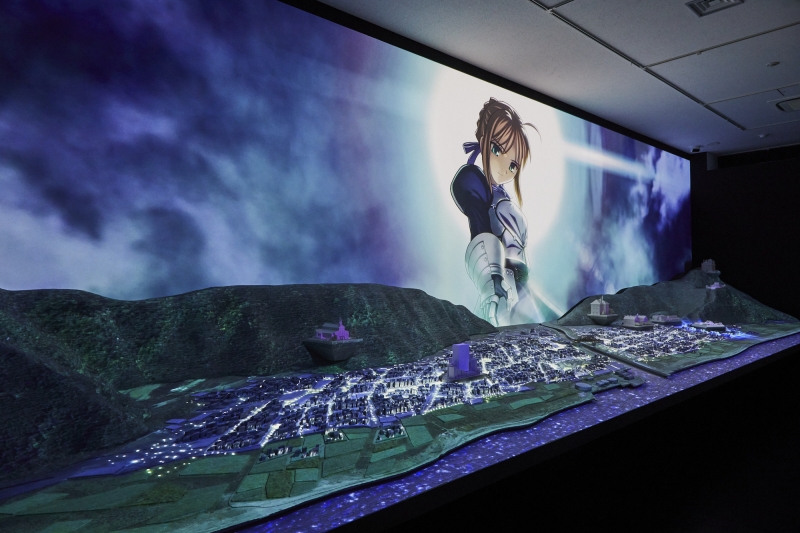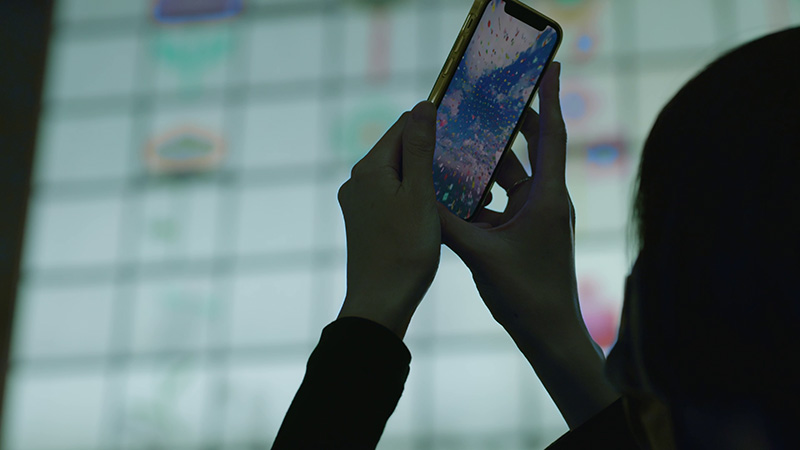
From here on, you will be linked to Nomura Co., Ltd. 's partner page. You can apply from the list of available positions at the link. (Please note that CIC may not always be recruiting.)

CIC NOTE
2024. 12-19
Goto NatsukiHello. I am Natsuki Goto, the content director at CIC. I specialize in video and digital content.
This time, I, having moved from the video industry, would like to think about the video in the spatial creation that our company undertakes.

Historia Maebashi Time Travel GATE (The oval part on the wall on the right is the video)
What do you think of when you hear the word "video"?
TV, movies, YouTube, TikTok, maybe some people shoot and edit their own videos. There are many different types, but I think they all flow within a set framework. Basically, they are viewed as a standalone video.
In contrast, the images I usually work on are not square, and sometimes they are not even flat; they spread out onto the walls and floors, transcending the frame of the screen and existing in a vast space.

Historia Maebashi Experience Theater (experiential video displayed on three walls and the floor)

TYPE-MOON Exhibition Fate/stay night - 15 Years of History - (C) TYPE-MOON
(The images on the wall are linked with the projection mapping onto the diorama.)
One reason is that it is outside of the box, but the big difference with visual media such as TV and movies is that it does not exist as a standalone image. What surface (three-dimensional) will the image be projected on, what will it convey, and how will people enjoy it? When thinking about spatial images, it is necessary to broaden your perspective beyond just the image surroundings that are directly connected to the production, and to raise your perspective to the space (room) in which the image will be placed, and the entire facility in which that room is incorporated. It would feel strange if the content of the image did not match the concept of the entire facility.
For this reason, in the early stages of a project, we work with planners and spatial designers to create an experience story. Rather than jumping straight into thinking about the content of the video, we first determine what kind of video is needed in line with the experience story of the entire facility, and then organize the purpose and role of the video. It may seem simple, but this allows us to complete a video that is more effective and convincing overall than simply saying, "Let's make a cool video!"
Creating a video in a space requires a lot of thought and can be a hassle, but when the finished product is enjoyed by the viewer, all the hard work is forgotten. I will continue to strive to deliver memorable spatial video.

Nomura Co., Ltd. 130th Anniversary Projection Mapping (Linkage of Projection Mapping and VR Images)